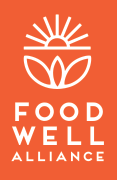UGA releases publication to assess soils in urban environments
/University of Georgia Extension Services in conjunction with their lab, put together a peer reviewed publication to help community and school gardeners assess soils in urban environments.
Urban gardeners and farmers may have concerns about potentially harmful contaminants in their soils. Before a garden is started, it is important to test the soil for contamination and for qualities such as pH and nutrient availability that impact soil fertility. A soil contaminant is any element or chemical in the soil at a concentration that could pose a health risk. If people use contaminated areas for gardening, they can be exposed to soil contaminants through the following pathways:
- Eating soil (directly or from soil clinging to vegetables).
- Inhaling dust and volatile compounds.
- Absorbing contaminants through the skin.
- Eating produce that has absorbed contaminants.
In the garden, the greatest risk of exposure is from eating contaminated soil or breathing in contaminated dust. This is especially true for children in the garden who may eat soil through hand-to-mouth play. This danger exists in flower gardens as well as vegetable gardens.
Though contaminants can move from the soil into plants, research has shown that the risk to people eating contaminated plants is slight. Leafy vegetables and fruits accumulate minimal amounts of contaminants; root crops accumulate slightly more.




